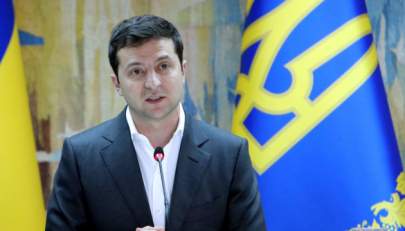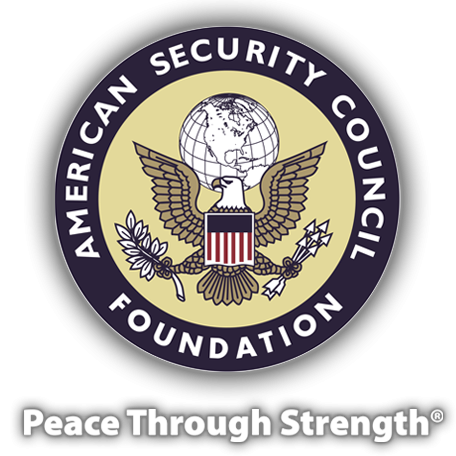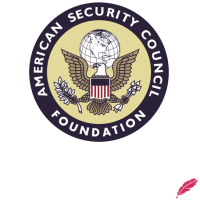Going on the Offensive: More Lessons for Cold War 2.0
By Alan W. Dowd, ASCF Senior Fellow

October 2022—In part one of this series, we discussed the Free World’s rediscovery of and recommitment to the peace-through-strength principles President Ronald Reagan employed to win the Cold War. This issue highlights ways the Free World can go on the offensive.
Arsenals
President Volodymyr Zelensky of Ukraine recently shared his one-percent-for-security concept. “Give us 1 percent of all your planes, 1 percent of all your tanks, 1 percent [of]… multiple-rocket launch systems, anti-warship systems, air-defense systems…When we finally have it, it will give us and you 100-percent security.”
The 50 nations sending arms and aid to Ukraine—a kind of 21st-century arsenal of democracy—haven’t exactly hit that mark, but they are definitely helping to sustain Ukraine, defend democracy and punish Russia. The United States, as it should, is leading the way, pouring some $25 billion in military aid and pledges into Ukraine.
This is straight out of America’s Cold War I playbook. At the beginning of the Cold War, President Harry Truman vowed to “support free peoples who are resisting attempted subjugation by armed minorities or by outside pressures.” At the end of the Cold War, Reagan declared, “We must stand by our democratic allies. And we must not break faith with those who are risking their lives—on every continent, from Afghanistan to Nicaragua—to defy Soviet-supported aggression and secure rights which have been ours from birth… Support for freedom fighters is self-defense.”
In a similar way, in these early hours of Cold War 2.0, President Joe Biden could invite democratic partners from Europe and the Americas, Asia and the Pacific to join the U.S. in helping nations in the crosshairs of tyrant regimes—not just in Ukraine, but everywhere—defend themselves. Now, as in the late 1940s and early 1980s, support for freedom fighters is a matter of self-defense.
For instance, spurred by what Vladimir Putin has done in and to Ukraine, the U.S. and willing partners could increase weapons deliveries and training for Georgia and Moldova. Russian troop deployments in these nations are unwelcome and bitterly opposed by their governments.
In the High North, NATO’s Arctic members—the U.S., Canada, Denmark, Iceland, Finland, Sweden, Norway—could formalize and harmonize their security efforts, combine their formidable capabilities, and deal with Moscow from a posture of unity and strength. There are many approaches the alliance could take to achieve this goal: a NATO Arctic Working Group, a NATO Center for Arctic Security modeled after other centers dedicated to specific security issues, even a full-fledged Allied Command Arctic. The primary goal of such an effort would be to deter Putin from extending his war of neo-imperialism into Arctic territory—and to deprive him of ill-gotten resources and riches.
A coalition of willing partners from the Quad, AUKUS and NATO could form a standing naval force to conduct freedom-of-navigation operations through the Taiwan Strait and in the South China Sea, thus delegitimizing Beijing’s illegal claims and manmade islands.
Allied nations could remind Beijing that two can play the A2/AD game. Relying on swarms of antiship missiles, the PRC’s anti-access/area denial strategy (A2/AD) aims to hold at risk allied warships, with the goal of preventing the Free World from assisting in any defense of Taiwan. As researchers at RAND detail, as U.S. civilian and military leaders have argued, and as U.S. military units downrange have demonstrated, the U.S. and partner nations could stand up an A2/AD network by knitting together antiship missile systems in the region and/or nesting new antiship missile systems in the region. The purpose of this effort, as RAND explains, would be to “challenge Chinese maritime freedom of action should China choose to use force against its island neighbors.” America’s diplomats would need to explain to regional allies that such an A2/AD coalition would rebalance the security equation, promote regional stability and thus deter war. One key ally—Japan—is already planning to deploy missiles on its southernmost islands. With sufficient hand-holding, encouragement and other incentives, other allies can be persuaded to join the effort—just as the Reagan administration proved in winning allied support for deploying Pershing IIs and other missile systems to counter Moscow’s destabilizing missile deployments during Cold War I.
In cyberspace and the information space, the Free World could puncture the “great firewall” Xi Jinping has built to control the flow of information to his subjects, shut down PRC propaganda pushers in the U.S. and Europe, and knock PRC and Russian cyber-pirates offline.
Finally, the Free World could and should reengage in the battle of ideas. Reagan argued that “a little less détente…and more encouragement to the dissenters might be worth a lot of armored divisions.” The Free World could offer high-profile platforms to independent journalists, human-rights activists, religious minorities, political dissidents and other victims of Putinism; stand up tribunals to investigate and expose Putin’s crimes against humanity; highlight Beijing’s contempt for human rights by drawing attention to its laogai prisons, abuse of Muslims, Christians and Tibetans, and mistreatment of Charter 08 signatories; and wield China’s willful mishandling of COVID-19 as a constant counterpoint to Xi’s claim that his business-suit authoritarianism is the wave of the future.
Weapons
The template for such a program of assertive defense is glimpsed in Reagan’s skillful use of the bully pulpit and in his efforts to punish Moscow’s expansionist inclinations.
Reagan’s National Security Decision Directive 75 stated that a central priority of the U.S. would be “to contain and over time reverse Soviet expansionism.” As the directive noted: “The U.S. must rebuild the credibility of its commitment to resist Soviet encroachment on U.S. interests and those of its allies and friends, and to support effectively those Third World states that are willing to resist Soviet pressures or oppose Soviet initiatives hostile to the United States, or are special targets of Soviet policy.”
In various ways and to varying degrees—technological assistance, covert support, weapons shipments, direct U.S. military intervention—what came to be called the Reagan Doctrine aided anti-communist forces and democratic movements in Central America, the Caribbean, Poland, Africa and, of course, Afghanistan. Taking his cues from Reagan, CIA Director William Casey told his deputies to “go out and kill me 10,000 Russians until they give up.” The CIA did that and then some in Afghanistan. The Soviets would lose 15,000 dead and 50,000 wounded in Afghanistan.
Employing a strategy similar to Reagan’s, the Biden administration and allied governments have already exacted an even heavier toll on Putin’s invasion force in Ukraine.
There’s definitely a message here for interested observers in Beijing. If Taiwan and the U.S. can rapidly construct what’s been termed “a porcupine defense”—one that eschews high-priced weapons systems and instead focuses on antiship missiles, “smart” maritime mines capable of remote activation/deactivation, inexpensive drones capable of swarm attacks, shoulder-launched antiaircraft missiles, nondigital communications operable despite cyberattacks, a military and citizenry trained in and equipped for small-unit operations, the kinds of countermeasures that have bled Putin’s army—they could make the prospects and costs of invasion/occupation appear so painful as to dissuade Beijing from even attempting it. Indeed, Xi must be made to understand that attempting in Taiwan what Putin has done in Ukraine will lead not to victory parades and an ascendant legacy, but to his troops in body bags, his military hardware in flames, his invasion force and international standing in tatters. Toward that end, the U.S. should expedite and expand delivery of such countermeasures to Taiwan. Those porcupine defenses need to start flowing now.
This approach of allowing defensive weapons to do the talking may seem too harsh, too unyielding. But this is the sort of language—not diplomatic communiques or UN resolutions or bombastic tweets or promises of flexibility—that men like Putin and Xi understand.











